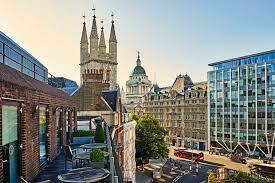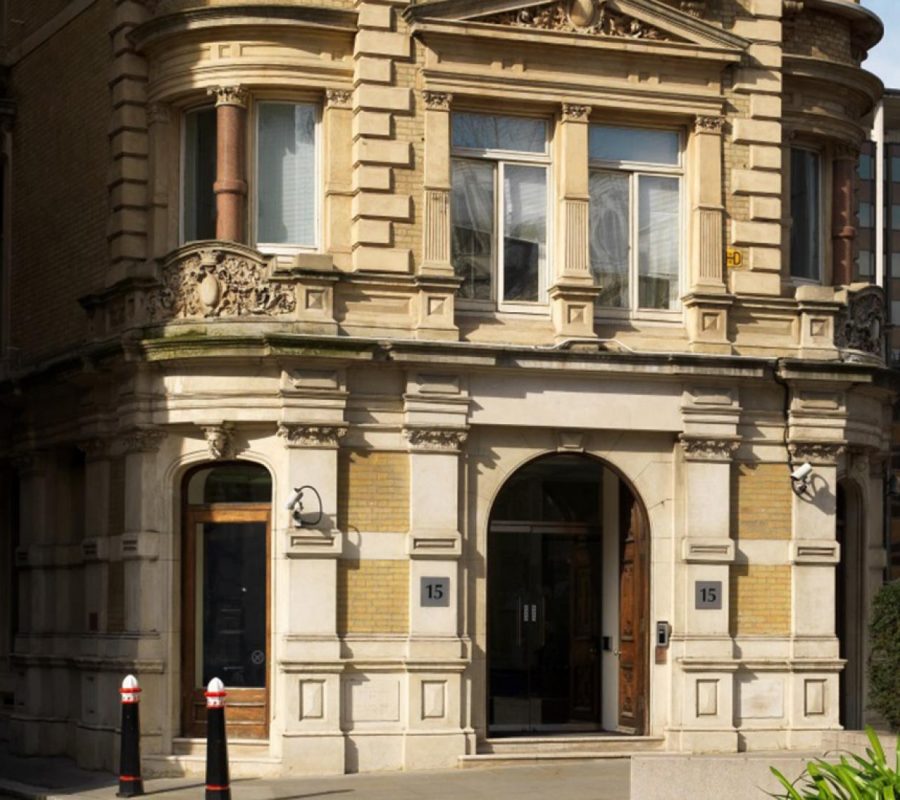Location:Barbican
Barbican Office Space
Barbican office space refers to workspace close to The Barbican Estate. The estate, colloquially known as Barbican, encompasses the mixed-use Barbican Complex, which contains residential and commercial property. It was developed after World War II on land that has been significant to London since its inception.
Derived from the old French word ‘barbacane’, a barbican is a fortified outpost or gateway. The main fort of Roman London was built between 90 and 120 AD, southeast of where the Museum of London now stands at the corner of London Wall and Aldersgate Street. Around 100 years later, walls were built around the city incorporating the old fort, which became a grand entrance known as Cripplegate.
The watchtower in front of the fort was later incorporated into the fortifications north of the wall, and the Normans later called it the Basse-cour or Base Court.
The Base Court continued to serve a military function during Edward I’s reign but was later repurposed as a London residence.
The Barbican’s residential property was developed just outside the city fortifications, northwest of the surviving London Wall and bastions after World War II.
During the war, the Cripplegate ward of the City of London was virtually demolished, and by 1951, the ward’s resident population was less than 50. Discussions began in 1952 about the site’s future, and in 1957, the Court of Common Council decided to build new residential properties.
Flats and maisonettes were developed on the 35-acre estate between 1965 and 1976, and the Corporation of the City of London owned and managed them. However, as the Government’s Right to Buy policy applied, all residences are now privately owned.
The residences were marketed to well-heeled professionals and international businesspeople. They attracted notable residents, including politicians, international prime ministers, high-profile lawyers, bankers, judges, journalists, actors and sportspeople, including footballer George Best.
Along with the Museum of London, the large mixed-use scheme also contains the Guildhall School of Music and Drama, the Barbican public library, the City of London School for Girls and the Barbican Centre.
The centre, the largest of its kind in Europe, hosts classical and contemporary music concerts, theatre performances, film screenings, and art exhibitions. It is the home of the London Symphony Orchestra.
The estate is considered one of London’s principal examples of concrete brutalist architecture. In 2001, it was chosen to be Grade II listed and deemed a site of special architectural interest for its scale, cohesion and ambition.
Due to its iconic look, the estate has been featured in several films, such as the 2000 film Gangster No. 1 and the 2008 James Bond Film Quantum of Solace, as well as TV shows, including the BBC series Luther and the Apple TV show Slow Horses.
Positioned within the EC2 postcode district, the locale offers an abundance of amenities and a range of premium office spaces in which high-profile companies from various sectors choose to base themselves.
Companies seeking office space to rent in the Barbican district are offered some of the most exceptional office space in the City of London. They can choose from a wide range of prime Grade A office buildings offering amenity-rich workspaces with state-of-the-art facilities.
Along with leased office space, Barbican offers a growing number of flexible office space options, including luxury serviced private offices, ready-fitted managed office suites and floors, and corporate co-working space solutions.
Whilst private serviced offices offer access to excellent communal amenities, the managed offices in Barbican provide options for private receptions, meeting rooms, and kitchen and bathroom facilities, with bespoke fit-outs.
In contrast to their leased counterparts, these are held on short-term licences yet offer the option to extend at the end of the term. The flexible contacts also allow a business to ‘flex’ within a building as needs dictate, with many buildings providing office space for 250 + desks.
The added advantage of flexible workspaces is that they are priced all-inclusively, meaning that the monthly fee includes rent, utilities, security, services charge, cleaning, enterprise-grade IT services, furnishings, and other items that would be paid for and managed separately if renting an office in Barbican via a lease.
The rental fee also covers items such as ad hoc boardroom use and services provided by the reception, secretarial, and concierge teams.
The high-end office spaces in Barbican are also managed sustainably, suiting the ESG credentials of the clients who occupy them. They offer modern end-of-trip facilities such as bicycle storage, showers, and changing rooms.
However, the location also offers excellent public transport links with easy access to the train stations of Farringdon, Liverpool Street and Moorgate and the London Underground tube stations of Barbican, Farringdon, Liverpool Street, Moorgate and St Paul’s.



